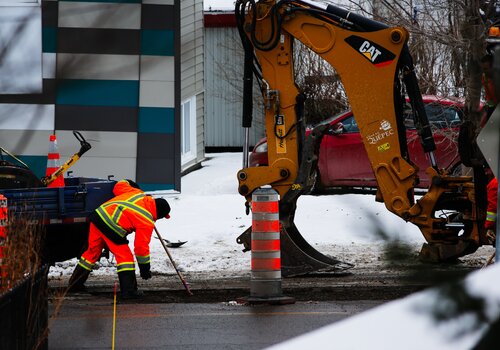Your construction project is underway: contracts are signed, crews ready, equipment lined up. But what happens when the unexpected happens? Weather delays, labor shortages, change orders or supply chain issues can delay a project before it even gets going. That’s where a smart contingency plan comes in. It's more than just a buffer – it's a proactive approach to reduce risk, protect margins and ensure project success.
Let’s walk through how you can develop and implement a solid contingency plan starting today.
WHAT IS A CONTINGENCY PLAN, REALLY?
A contingency plan is a structured approach for how your team will respond when project conditions don’t go as planned. In construction, this often includes:
-
Cost contingencies – Extra funds allocated to cover unplanned expenses.
-
Time contingencies – Built-in float to absorb schedule delays.
-
Resource contingencies – Backup materials, labor or equipment.
According to the U.S. Department of Transportation’s Federal Highway Administration, contingency planning is essential to accommodate unknown conditions and evolving risks throughout any project lifecycle.
Identify and Prioritize Project Risks: Start by assessing your project’s unique risk factors. These might include:
-
Permitting delays
-
Extreme weather
-
Late material deliveries
-
Subcontractor availability
-
Price volatility
A well-documented risk register can help track these concerns. Review and update your risk register throughout the year during key steps of each project.
BUILD CONTINGENCY INTO THE BUDGET AND SCHEDULE
Starting with a well-planned budget is essential but having contingency for additional costs is just as critical. How much should you set aside? There's no one-size-fits-all answer, but general guidelines suggest 5%–10%.
But contingency isn’t just about money—it’s also about time.
You can add float time into your schedule to help anticipate and prepare for delays. Schedule analysis should identify where time buffers can reduce downstream risk.
Contingency should not be treated as an unregulated slush fund. Define clear governance over who can access contingency and under what circumstances.
USE REAL-TIME DATA TO TRACK AND ADJUST
With modern project management software, you can track in real-time:
-
Contingency burn rate
-
Budget variance
-
Schedule float
-
Field productivity
If you’re not already using tools like earned value management (EVM), now’s the time to start. By using data from past work accomplished on a project to estimate future trends, EVM can help with planning and resource allocation.
Digital twins can help enable precise resource management by providing detailed insights into material usage, labor allocation and equipment performance. This helps in reducing waste, controlling costs and improving overall project efficiency.
Contingency isn’t set-it-and-forget-it. Adjust your contingency plan as the job progresses:
-
At 30% design, risks are still high—keep contingency robust.
-
After mobilization, start reallocating unused contingency toward end-of-project closeout buffers.
-
Review to capture what triggered contingency use and how you can mitigate similar risks going forward.
PRACTICAL STEPS TO TAKE RIGHT NOW
Here are ways to incorporate contingency planning immediately on your next job:
-
Hold a risk kickoff meeting with stakeholders to identify early threats.
-
Add float time to outdoor activities prone to weather impacts.
-
Develop backup vendor agreements in case materials or equipment are delayed.
-
Set scope “freeze” dates so last-minute changes don’t derail planning.
-
Assign ownership of risk categories to team leads for better visibility.
-
Log and track every contingency draw and analyze usage trends for future jobs.
FINAL THOUGHTS: PLAN SMARTER, STRESS LESS
Delays and overruns are an unfortunate reality of construction, but they don’t have to derail your project. With the right contingency planning you can stay proactive and minimize surprises. Future-you—and your whole project team—will thank you.
Stay ahead of delays and rising costs—start planning smarter today. Build a contingency plan that keeps your next project on budget, accounts for material price fluctuations, and helps your team stay organized during peak season. The sooner you prepare, the smoother your build.
Photo credit: SHUTTERSTOCK/SAIARLAWKA2












